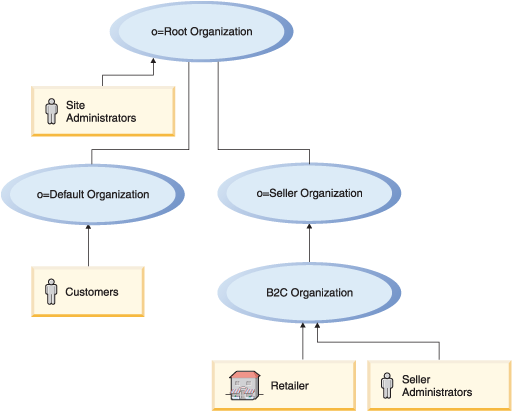Develop > Business models > Consumer direct business model
Consumer direct organization structure
The organization structure of a consumer direct store contains three organizations: root, default, and seller.
The following diagram depicts the consumer direct organization structure.

- Root organization
- All organizations in the business become descendents of the root organization. The site administrators who maintain the online site, are owned by the root.
- Default organization
- All of the business' customers are owned by the default organization. The default organization is a child of the Root Organization.
- Seller organization
- A seller organization is created to own all the stores (Retailer) and the administrators who maintain the store. The administrators who maintain the store's functions (for example customer service representatives, catalog and product managers) are termed Seller administrators and are owned directly by the Seller organization.
- B2C organization
- A B2C organization is created to own a single store (Retailer) and the administrators who maintain the store. The administrators who maintain the store's functions (for example customer service representatives, catalog and product managers) are termed Seller administrators and are owned directly by the B2C organization. This lower level organization allows you to give granular roles to administrators, limiting them to a single store.
Related concepts